This classic bearnaise sauce is made with white wine, egg yolks, dijon mustard, and other simple ingredients. It’s a version of one of the five French mother sauces everyone should master. A versatile steak sauce full of flavor that can go with various dishes, including chicken, veggies, and seafood!
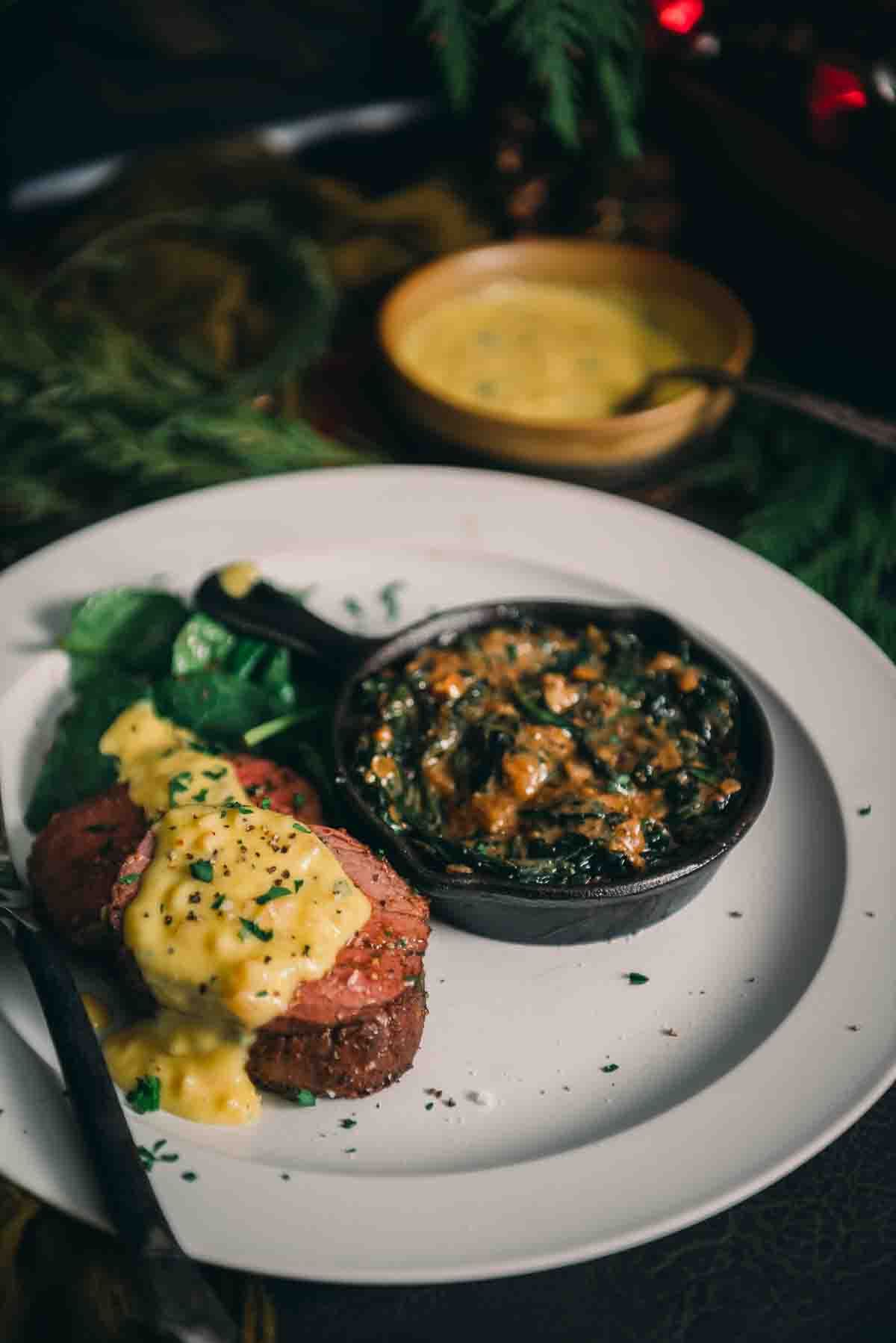
Table of Contents
When crafting this béarnaise sauce recipe, we tested other recipes to ensure we understood what makes this classic recipe work. While we wanted to make this an easy bearnaise sauce recipe, we didn’t want to take shortcuts. After trial and error, this bearnaise sauce recipe we found best reminded us of the classic, creamy sauce we know and love.
This bearnaise recipe is not only full of flavor, but it creates a perfect creamy texture, thicker than our peppercorn sauce. The tarragon, ghee, dijon, and white wine vinegar, along with the other necessary ingredients) bring this sauce to life. This luscious sauce is terrific over fish, chicken, and vegetables like asparagus.
What Is Bearnaise Sauce?
Béarnaise sauce is a delicious French sauce often served with a steak at steakhouses or fine dining establishments. It’s typically made with egg yolks, butter, vinegar, tarragon, and shallots, with a touch of black pepper. Bearnaise sauce tastes creamy, rich, and buttery. It’s slightly acidic and herby. If you’re a fan of hollandaise sauce, this recipe builds on a classic hollandaise recipe.
It’s an old-school recipe reminiscent of days of white linen tablecloths and 5-star service. And if you can master it, it will take your cooking prowess to a new level.
Steak with sauce bearnaise is as classic as it gets. And it’s best with mild steaks like sous vide filet mignon or even an expertly cooked medium-rare oven-roasted chateaubriand. It’s also the perfect accompaniment to other mild-flavored proteins where a boost of fat and flavor can elevate the dish, like poached salmon or chicken breast.

Bearnaise Sauce Ingredients
- White wine – use a dry wine you’d enjoy drinking later.
- White wine vinegar
- Shallot
- Fresh Tarragon sprigs
- Egg Yolks
- Water
- Lemon juice
- Ghee – or clarified butter. You want to work with melted butter that has milk solids removed.
- Dijon mustard
To Serve:
- Pinch Salt – we always use kosher salt when cooking.
- Freshly ground black pepper
- Minced fresh tarragon for garnish
How to Make Béarnaise Sauce
- To Start: In a small saucepan preheated over medium heat, combine wine, vinegar, and shallot. Add the tarragon, stir occasionally, and let the liquid reduce. Remove from heat and set aside to cool.
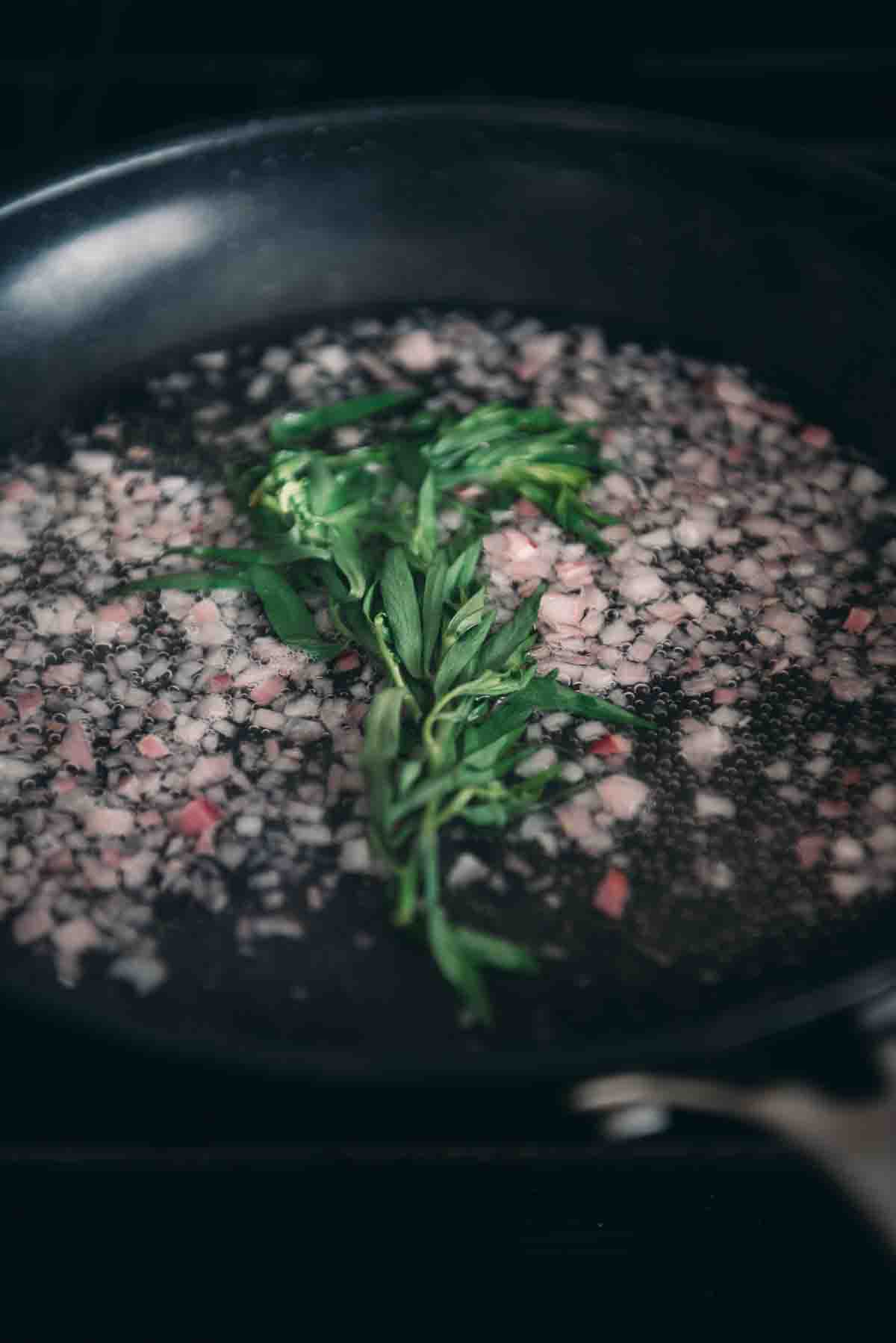
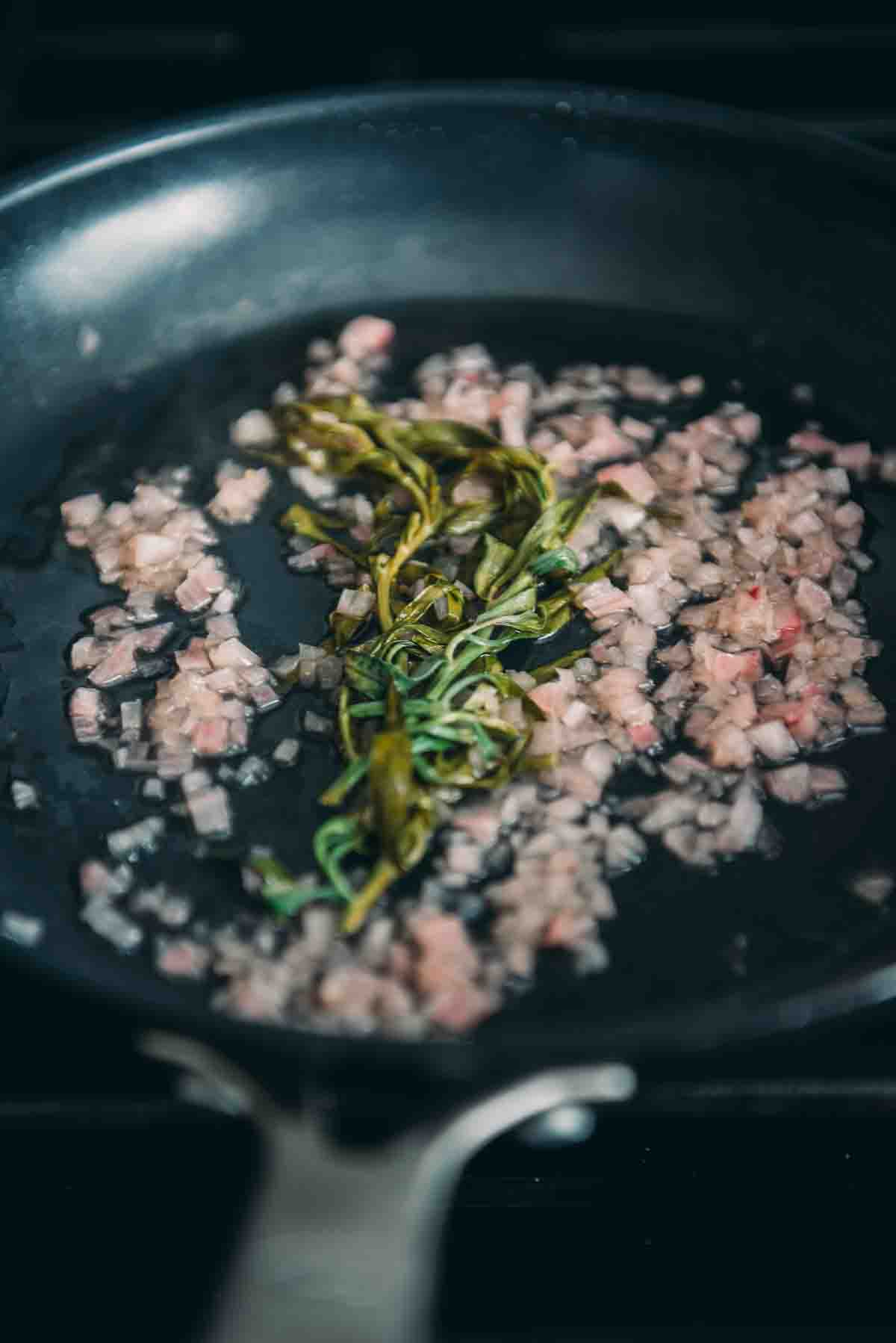
- Make the emulsion: Set the ghee in a pot over low heat to return to liquid form but do not bring up to heat.
- Meanwhile, combine egg yolks with the water in a small pot and whisk.
- Place over low heat, and while whisking continuously, add the liquified ghee one tablespoon at a time, mixing in before adding the next.
- After the 6th or 7th tablespoon of ghee, turn off the heat and continue to mix in, whisking constantly. It’s the constant even heat that helps prevent it from overcooking and making scrambled eggs.
- When the clarified butter is fully emulsified into the egg, you should have a smooth sauce. See our notes below on what to do if your sauce splits.
- Stir in the Dijon mustard with a whisk until smooth.
- Remove the tarragon sprig from the shallots and mix it into the sauce. Add the fresh tarragon and season with kosher salt and coarse ground black pepper to taste. Serve immediately over freshly grilled or pan-seared steaks, and enjoy.
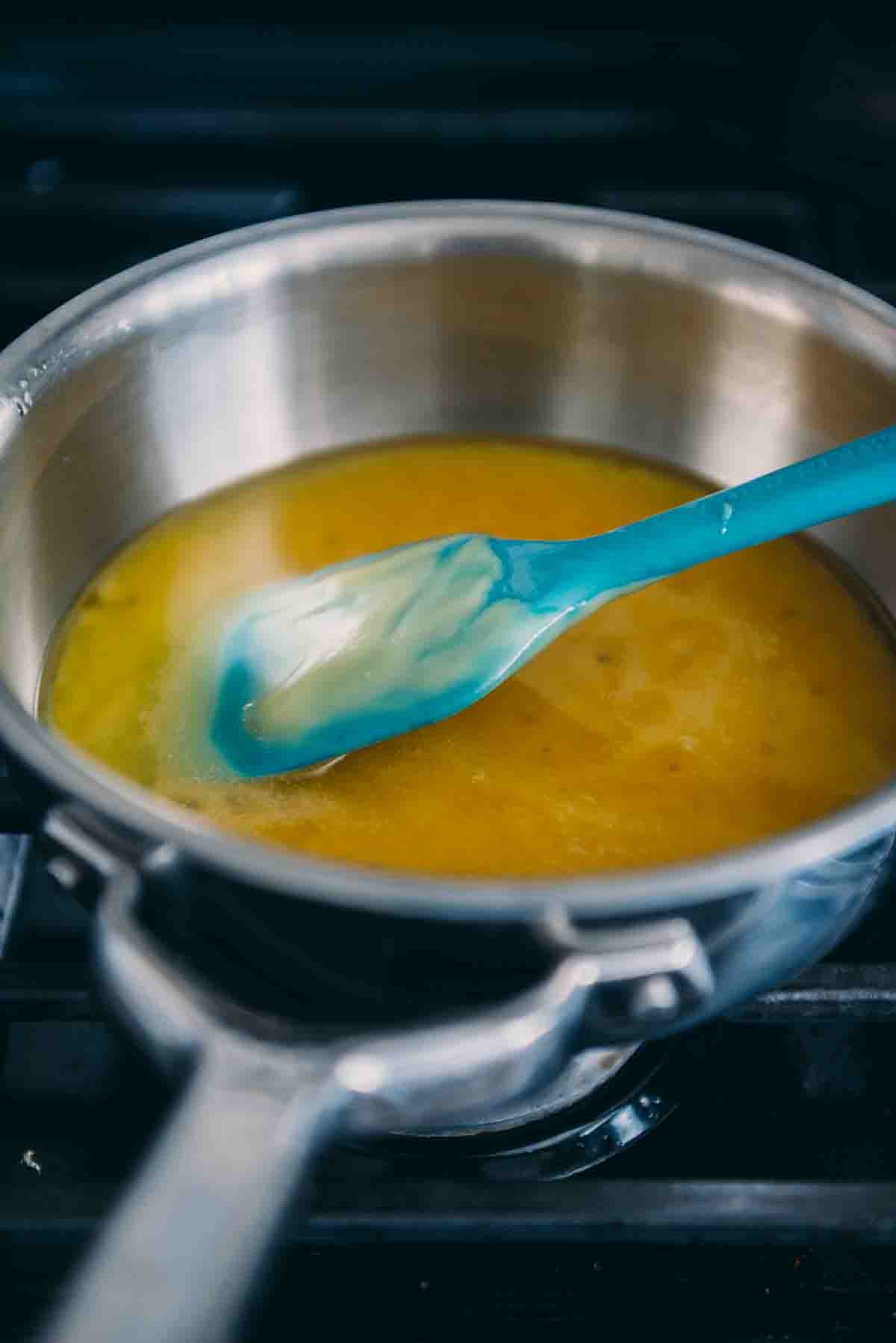
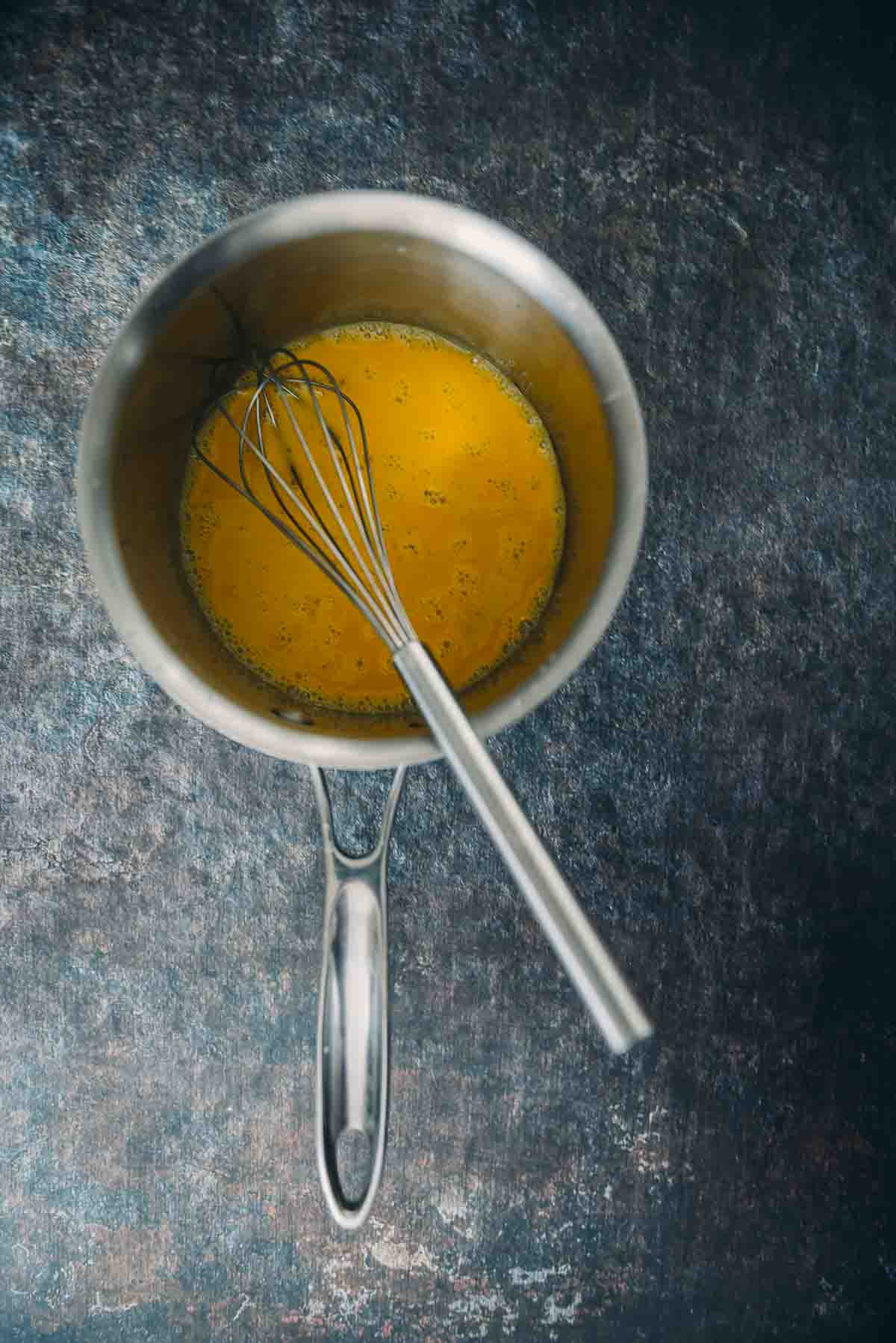
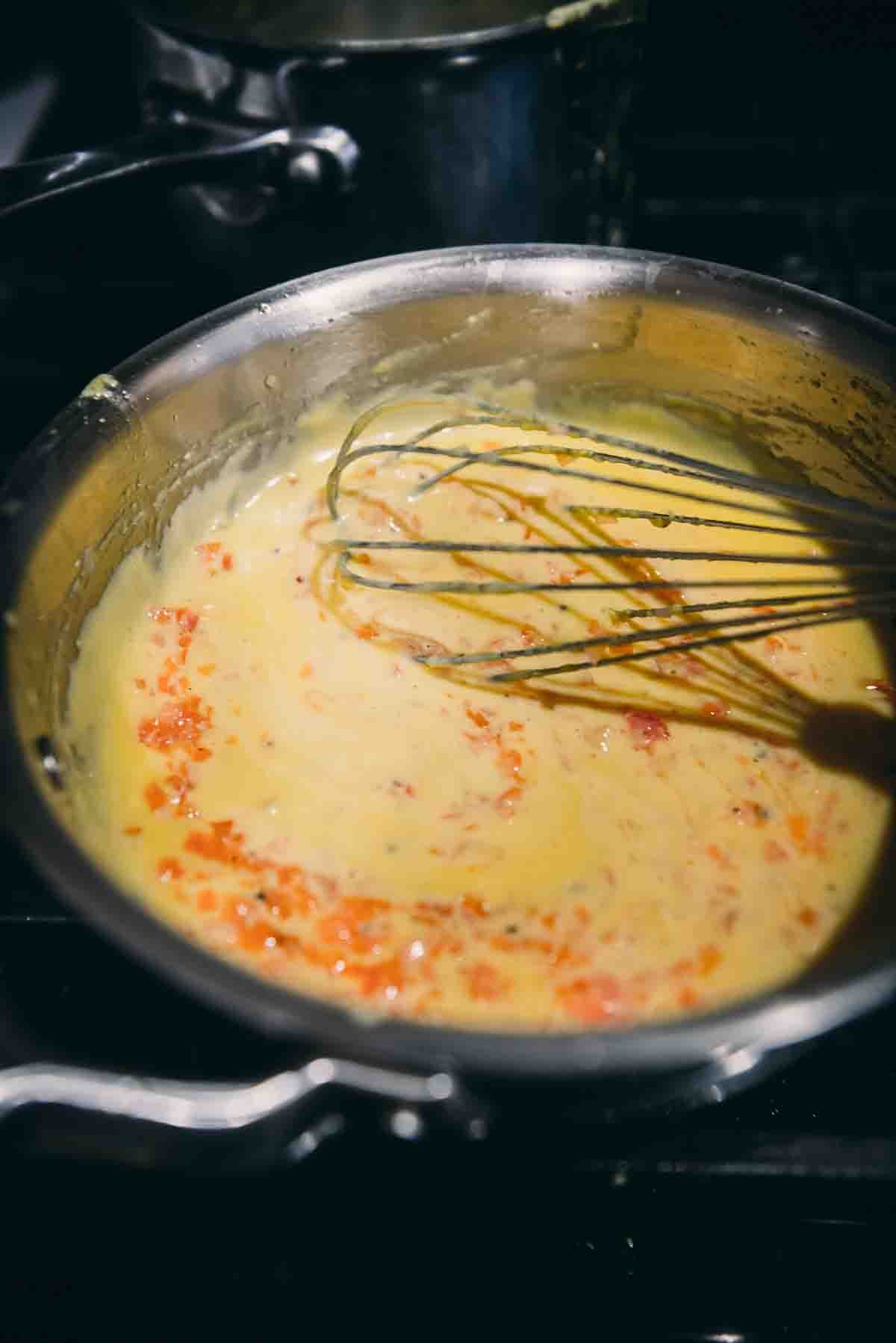
Girl Carnivore Expert Recipe Tips
- Instead of setting the eggs in a pot directly over a low flame, you could use a bowl of simmering water in a double boiler if you have one. Use caution not to let the bottom of the bowl touch the boiling water.
- We recommend a dry white wine for this recipe. Sauvignon Blanc, Riesling, or Pinot Grigio work great.
- If the sauce is too thick, stir in a tablespoon of water to smooth it.
- You could use an immersion blender or food processor to form the emulsion, adding the butter slowly in a thin stream. But, we believe that just once, you should master this by hand with a whisk. It helps to learn when the sauce thickens as the yolk and butter come together.

How to serve / What to serve it with
This classic sauce is excellent over pan-seared filet mignon or cuts with a beefier flavor like top sirloin steak and smoked beef tenderloin. If you want to elevate any pan-seared steak, this sauce should be a consideration. It’s also wonderful on roasted or poached chicken breast, blanched asparagus, roasted or blanched fish, and even over recipes like poached halibut.
Leftovers & Reheating
It’s best to serve bearnaise sauce immediately. If you aren’t serving the sauce immediately, store it in a thermos or hot liquid container with a lid to keep it warm until ready to serve within an hour or two. You want to avoid reheating this sauce over direct heat.
Refrigerate: If you do end up with leftover sauce, you can store it in an airtight container and in the refrigerator for up to two days.
Reheat: If needed, it can be reheated over a double boiler, whisking to bring the sauce to temp.
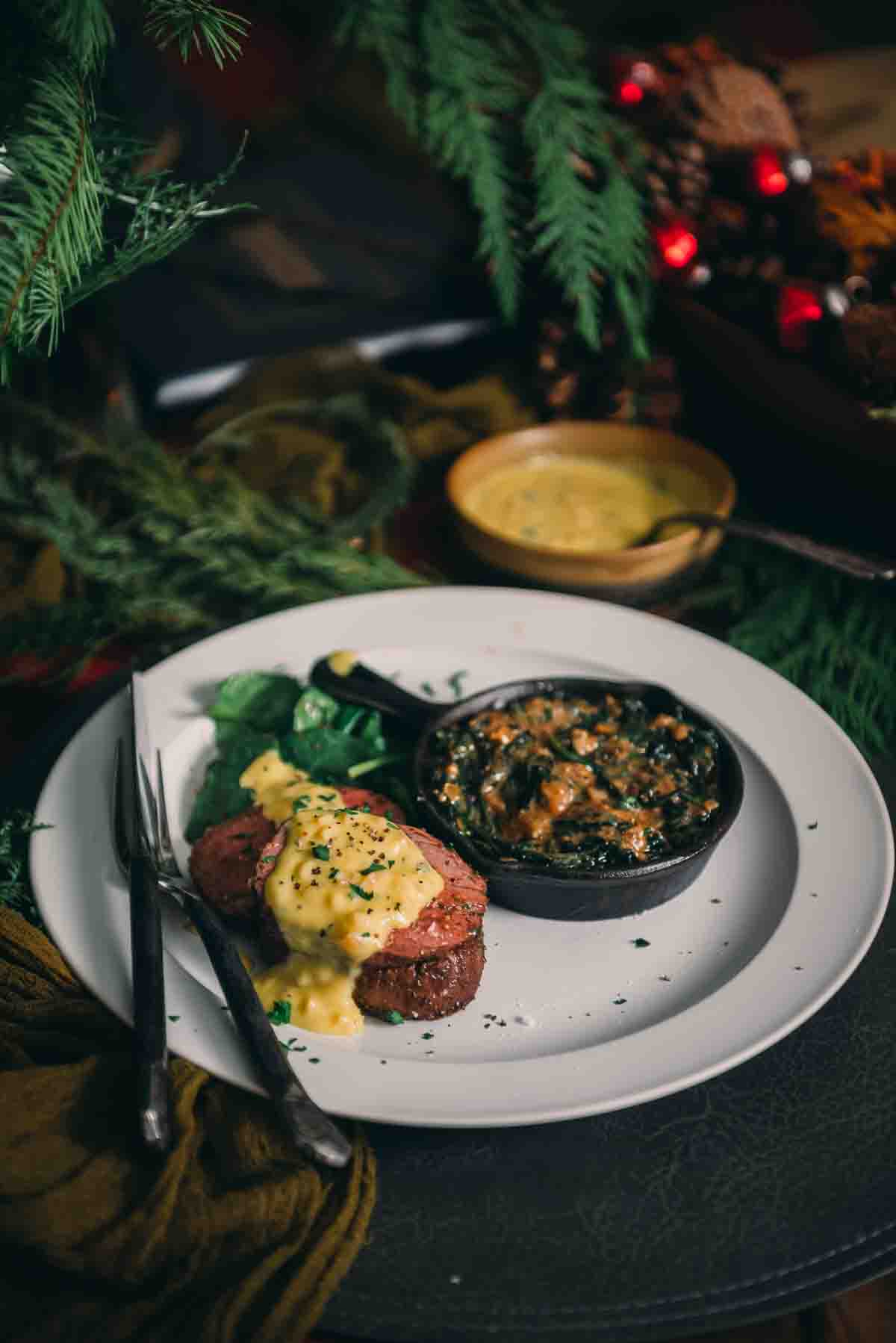
More Delicious Sauce Recipes
Sauces, Mops, & Condiments
Brandy Peppercorn Sauce
Sauces, Mops, & Condiments
Red Wine Sauce for Steak
Sauces, Mops, & Condiments
Homemade Cilantro Chimichurri
Sauces, Mops, & Condiments
Red Chimichurri
We hope you enjoy this delicious bearnaise sauce recipe. Is this your first time making this classic sauce? If it is, let us know how it went for you in the comments below, and be sure to rate the recipe. We’d love to hear what you paired it with and how it was received if you shared it with others.
Classic Béarnaise Sauce Recipe

Ingredients
For the Béarnaise sauce:
- ¼ cup White wine
- 1 tbsp white wine vinegar
- 1 Shallot finely minced
- Tarragon
- 2 Yolks
- 1 tbsp water + more as needed, one tablespoon at a time
- 1 tsp lemon juice
- 14 – 16 tablespoons ghee
- 1 tbsp dijon mustard
To Serve:
- Pinch Salt
- Black pepper
- Minced fresh tarragon for garnish
Instructions
To Start:
- In a small pan preheated over medium heat, add the white wine, vinegar, and shallot.
- Add the tarragon and let the liquid reduce to about one tablespoon, stirring occasionally.
- Remove from heat and set aside to cool.
Make the emulsion:
- Set the ghee in a pot over low heat. If your range doesn’t hold an even low temperature, consider sliding the pot only to cover half of the flame to keep the ghee liquified but not simmering at all.
- Meanwhile, whisk the egg yolks with the water in a small pot.
- Place over low heat, and while whisking continuously, add the liquified ghee one tablespoon at a time, ensuring it is fully incorporated before adding the next.
- After the 6th or 7th tablespoon of ghee, turn off the heat and continue to mix in one tablespoon a time, whisking to emulsify.
- When all of the clarified butter is fully emulsified into the egg, you should have a smooth, luscious sauce that is thinner than mayonnaise but still coats the back of a spoon.
- Stir inthe Dijon mustard.
- Remove the tarragon sprig from the shallots and mix it into the sauce. Add the fresh minced tarragon and season with salt and coarse ground black pepper to taste.
- Serve immediately.
Video
Notes
Nutrition
Bookmark this recipe now!
Recipe FAQs
Bearnaise sauce is what happens if you take hollandaise sauce to the next level. Bearnaise is a derivative of it typically made with white wine vinegar, egg yolks, tarragon, shallots, and other fresh herbs added to build on the flavor.
Bearnaise sauce is what happens if you take hollandaise sauce to the next level. Bearnaise is a derivative of it typically made with white wine vinegar, egg yolks, tarragon, shallots, and other fresh herbs added to build on the flavor.
When the sauce splits, it will look oily and grainy—not smooth and shiny. This results from fat being added too quickly and the pan being too hot.
But don’t fret; if your sauce splits (and you will know the second it does), you can save it.
Remove the sauce from the heat and add one tablespoon of water. Whisk to bring the sauce back together. Be patient, but if that doesn’t work, then see our next tip.
Alternatively, whisk one egg yolk with one tbsp water and then slowly whisk in a little of the broken sauce to form a smooth emulsion again until fully incorporated.
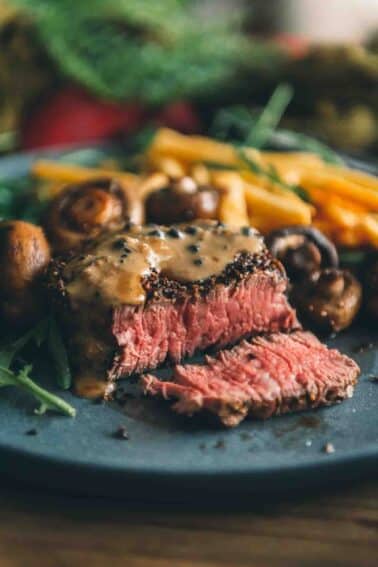
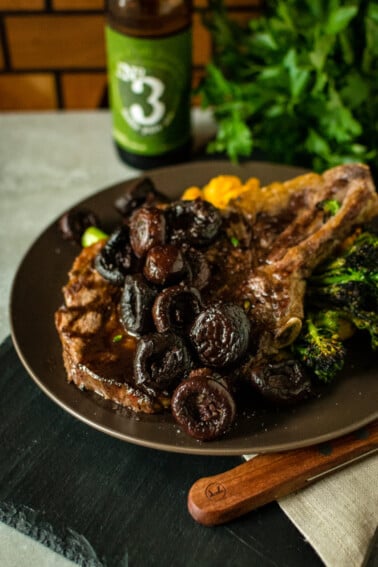
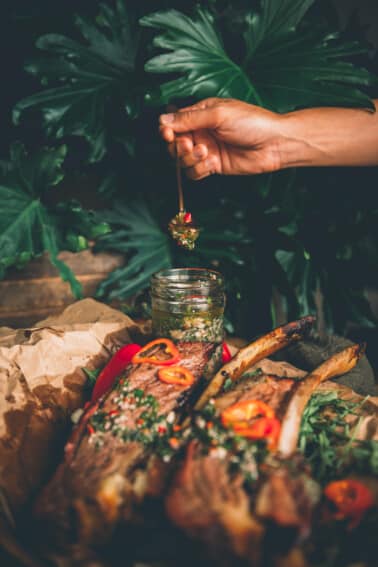
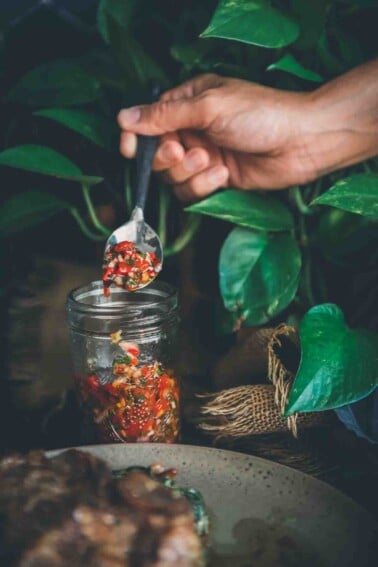
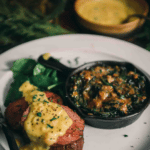

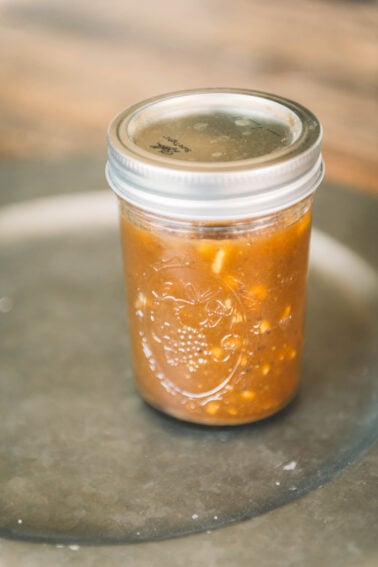
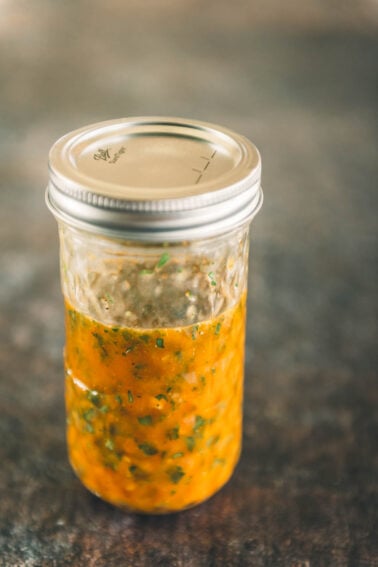
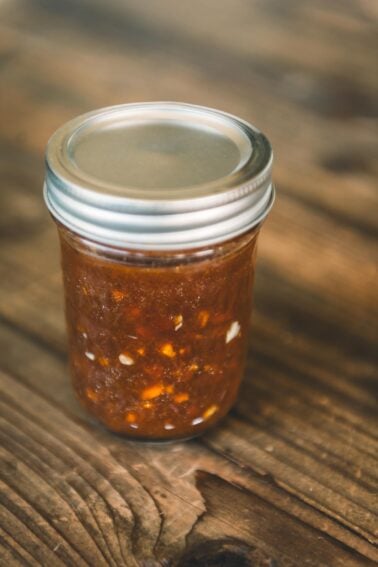
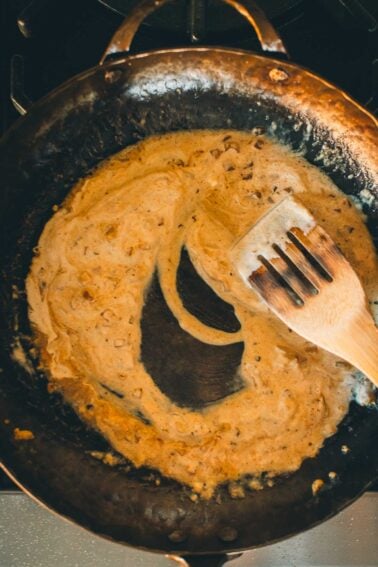









This sounds amazing
Thanks Dina! We should get together when Bruce is traveling one of these days and cook!
Not bad. You only forgot one ingredient: chervil